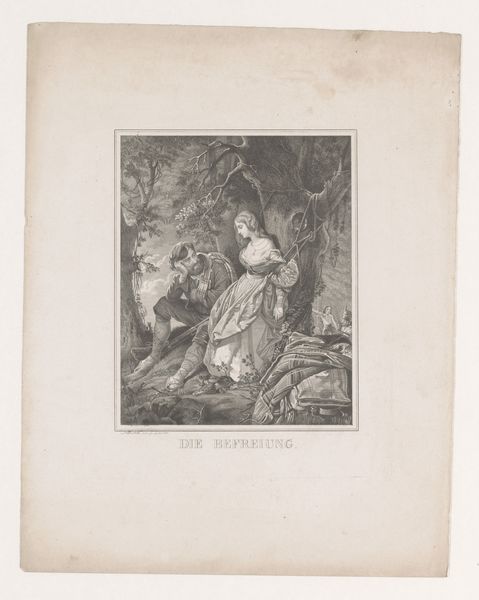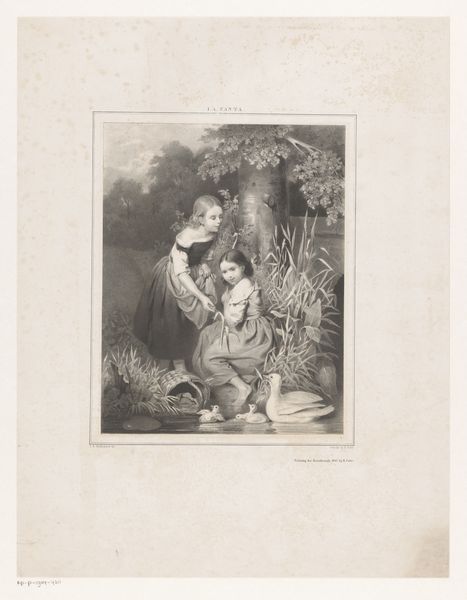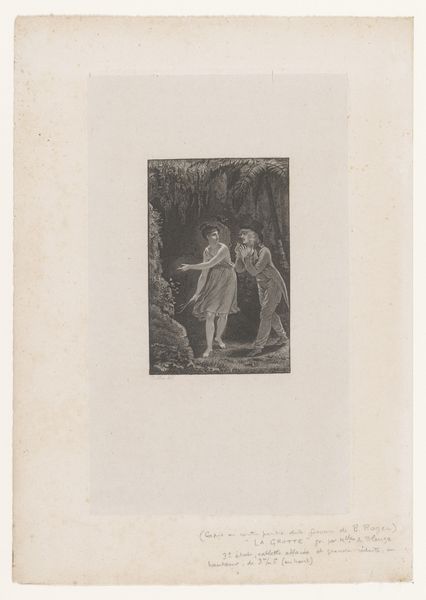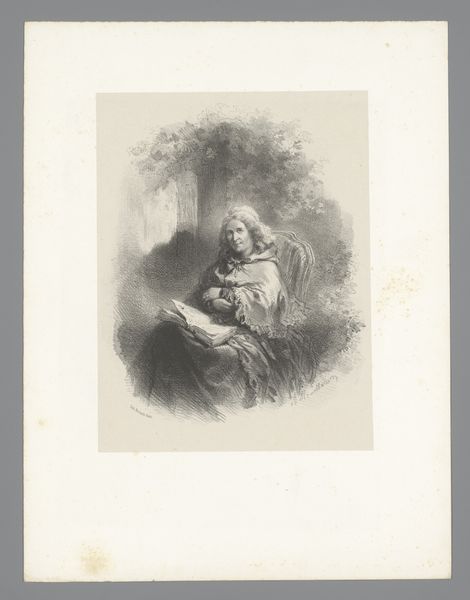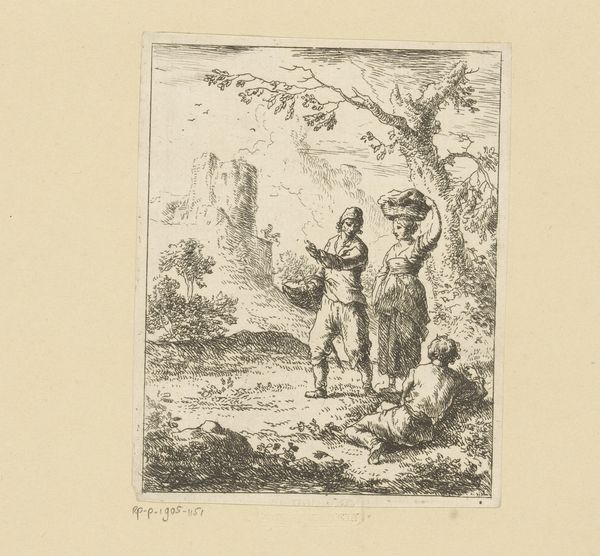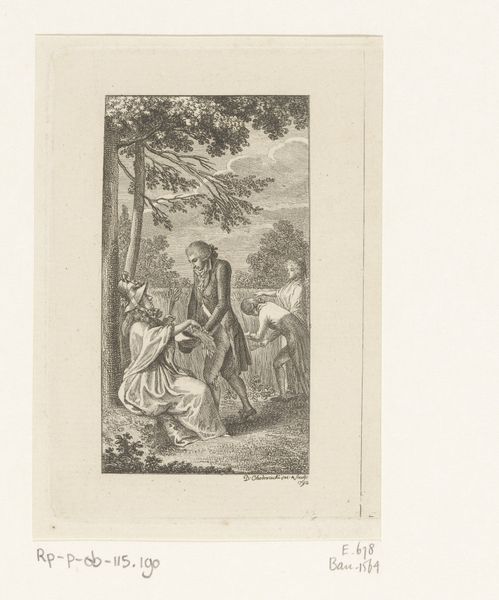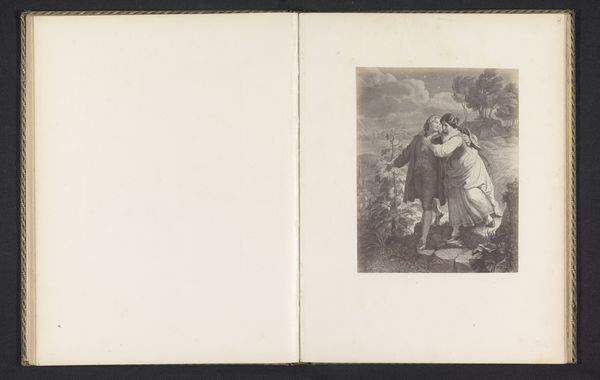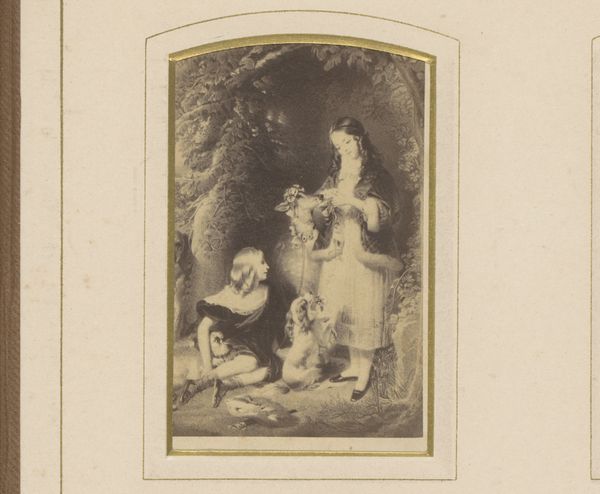
Fotoreproductie van een tekening van een meisje met een hond die vanuit de verte wordt bekeken door een jongen achter een boom c. 1871 - 1881
0:00
0:00
Dimensions: height 174 mm, width 135 mm
Copyright: Rijks Museum: Open Domain
Curator: I find this such an evocative piece. The work, dating from around 1871 to 1881, presents a photo reproduction of a drawing attributed to an anonymous artist. It depicts a genre scene rendered in pencil, a common medium of the Romanticism era, featuring a girl and her dog observed from afar by a boy hiding behind a tree. Editor: My immediate feeling is one of voyeurism, a sense of watching something private unfold. The composition is structured so that the viewer's eye is led through the landscape toward the girl, mirroring the hidden boy's perspective, but something about the positioning seems quite gendered and somewhat charged. Curator: It does evoke those classic fairytale archetypes—the innocent maiden, the watchful boy concealed amidst the natural world. Think of how these visual symbols become embedded in our cultural memory, resonating through generations, telling us unspoken truths. I can almost feel the warmth of the pencil on the paper. Editor: Precisely! The Romantic style amplifies that feeling. Yet, I question whether we’re only looking at innocence. A young girl and her dog are juxtaposed against this looming, shadowy figure of the boy, suggesting possible underlying themes of surveillance and gender dynamics. Curator: The dog is an important figure too. Notice the way its tail is wagging? It creates a beautiful contrast to the boy hidden in the bushes. It reinforces a powerful connection—loyalty and visibility in contrast to the boy's clandestine watch. Editor: Yes, the loyal dog disrupts a singular interpretation of naive romance. How interesting that an everyday image manages to pack in the idea of societal watchfulness, this almost Freudian tension between the visible and the concealed that runs deeper when you add considerations around patriarchal expectations of acceptable observation of women’s behavior. Curator: Considering that societal framework certainly changes my own appreciation of the work. Editor: Mine too! It underlines art's potential for social critique, a conversation between past aesthetics and present awareness. Curator: Well said. The simple lines contain more meaning than initially meets the eye. Editor: Exactly—layers to uncover, questions to pose—the artwork invites further dialogues.
Comments
No comments
Be the first to comment and join the conversation on the ultimate creative platform.
